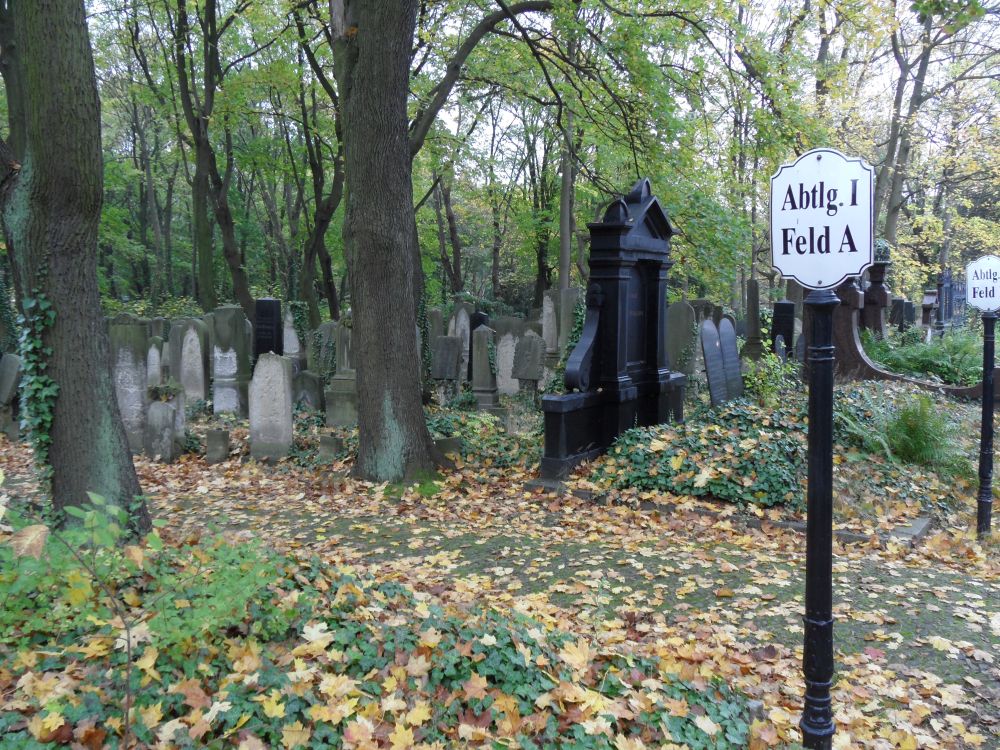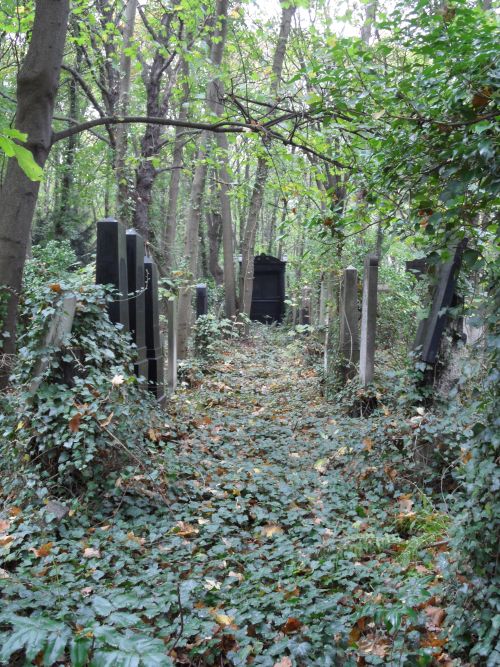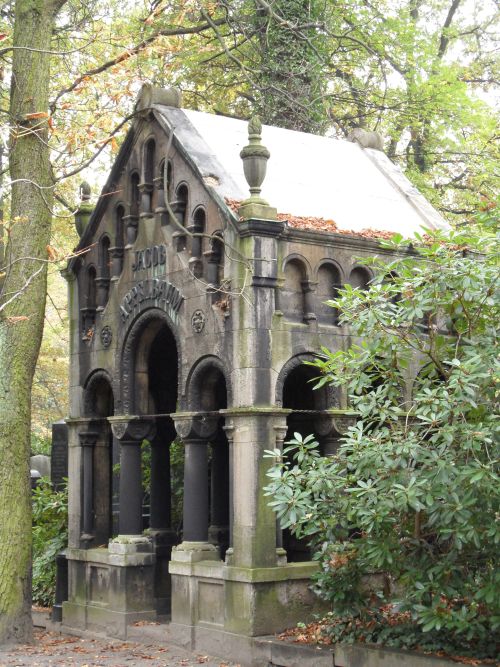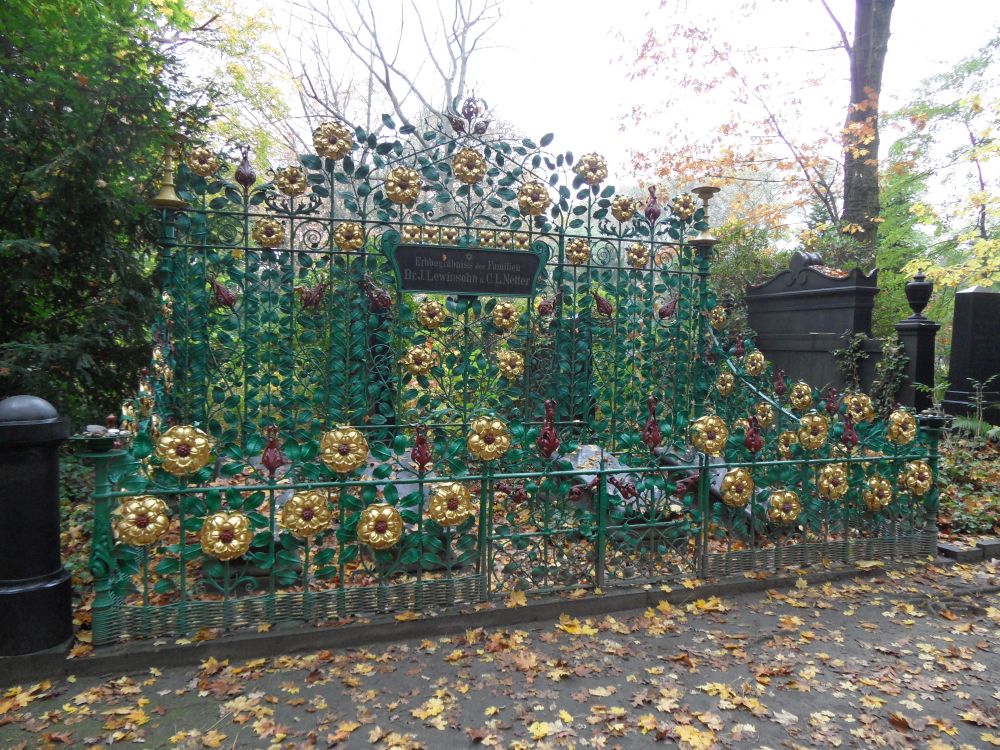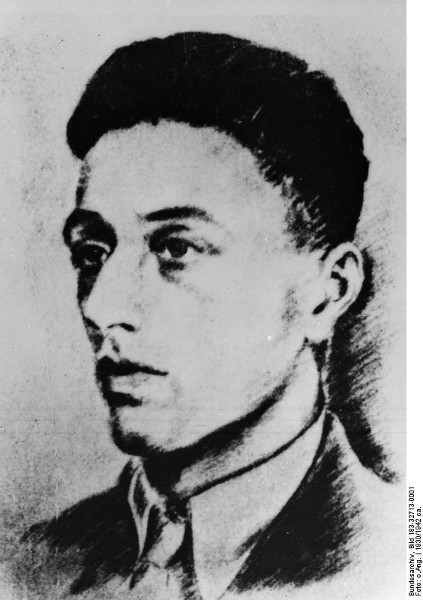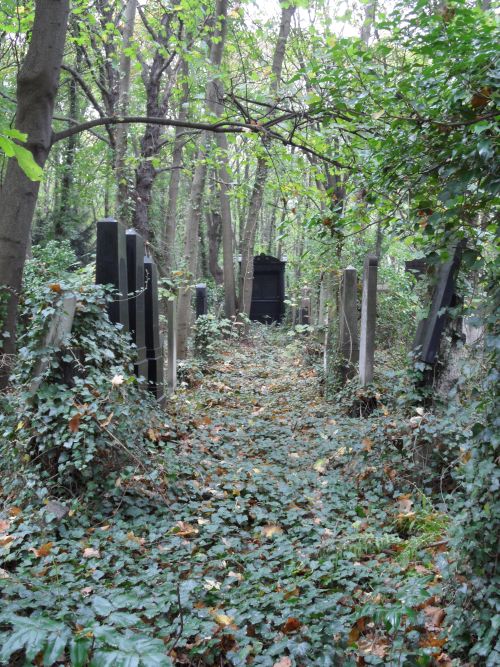Jewish Cemetery Weissensee
The Jewish Cemetery Weissensee was established in 1880 and designed by the German architect Hugo Licht. Before the Nazi era a lot of prosperous and prominent Jews found their final resting place on the cemetery, as well as 400 Jewish soldiers who were killed during the First World War in the service of the German Imperial Army.
After the Nazi takeover a lot of Jews were buried here who took their own lives out of despair. Even after the deportations of the German Jews began in 1941, the cemetery continued to be in operation. For example Jews in mixed marriages and the elderly who weren’t yet deported were buried here after 1941. On the Jewish cemetery many Jewish refugees found a temporal hiding place.
The cemetery, on which during allied bombardments many bombs fell, survived the war relatively unscathed, with 4.000 damaged graves and a destroyed hall of mourning. In September 1945 at the entrance of the cemetery a memorial plaque for the victims of the Holocaust was inaugurated by the Jewish community.
When Berlin was divided into occupation zones by the allied conquerors the Jewish cemetery became part of the Soviet zone and from 1949 of Eastern Berlin in the GDR. The communist period didn’t do the cemetery in Weissensee any good. With a decreased Jewish population and an indifferent government the cemetery fell victim to vandalism and negligence.
The Jewish cemetery Weissensee, nowadays with approximately 115 600 graves the biggest Jewish burial site in Europe still in operation, is proposed for inscription as a UNESCO World Heritage Site. The cemetery is opened for visitors, except on Saturdays (Sabbath).
Do you have more information about this location? Inform us!
Source
- Text: Kevin Prenger
- Photos: Koos Winkelman (1), Coen Prenger (2, 3, 4, 5)
Related books
Nearby
Museum
- Berlin-Hohenschönhausen Memorial Museum - Berlin
- 2.9 km
- Otto Weidt’s Workshop for the Blind - Berlin
- 4.4 km
- Anne Frank Centre - Berlin
- 4.4 km
Point of interest
- Schultheiss Brewery - Berlin
- 0.9 km
- Adventkirche Berlin - Berlin
- 1.9 km
- Water Tower Obersee - Berlin
- 2.1 km
Monument
- Holocaust monument Jewish Cemetery Weissensee - Berlin
- 0.0 km
- Memorial Anna Ebermann - Berlin-Pankow
- 0.4 km
- Bismarck-memorial Berlin-Weißensee - Berlin-Weißensee
- 1.5 km
Cemetery
- German War Graves St. Hedwig-St. Pius Berlin - Berlin
- 1.6 km
- Soviet War Graves St. Hedwig - St. Pius (Berlin) - Berlin
- 1.6 km
- German War Graves St. Andrew- St. Marks - Berlin
- 1.8 km
Remembrance Stone
- Stumbling Stone Meyerbeerstraße 31 - Berlin-Weißensee
- 0.3 km
- Stumbling Stones Berliner Allee 83 - Berlin-Weißensee
- 0.5 km
- Stumbling Stone Charlottenburger Straße 141 - Berlin-Weißensee
- 0.6 km


